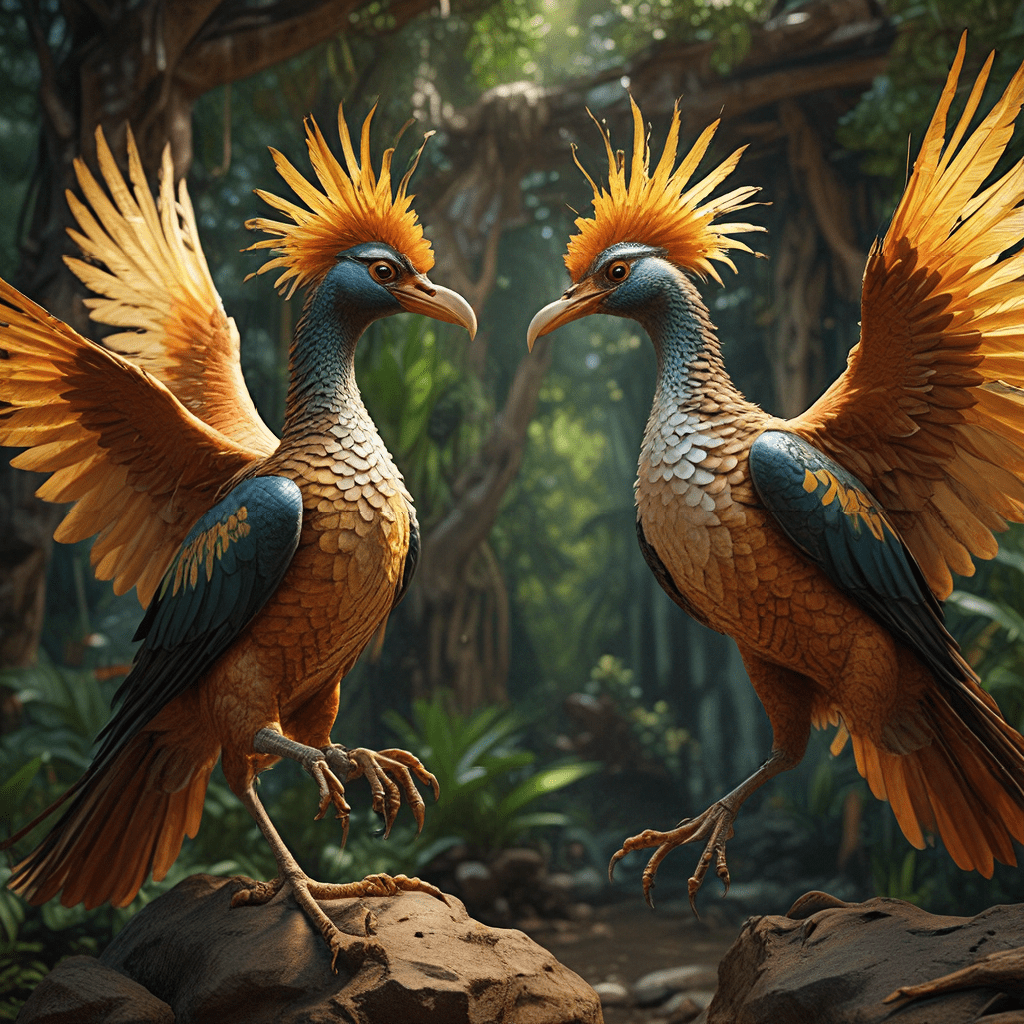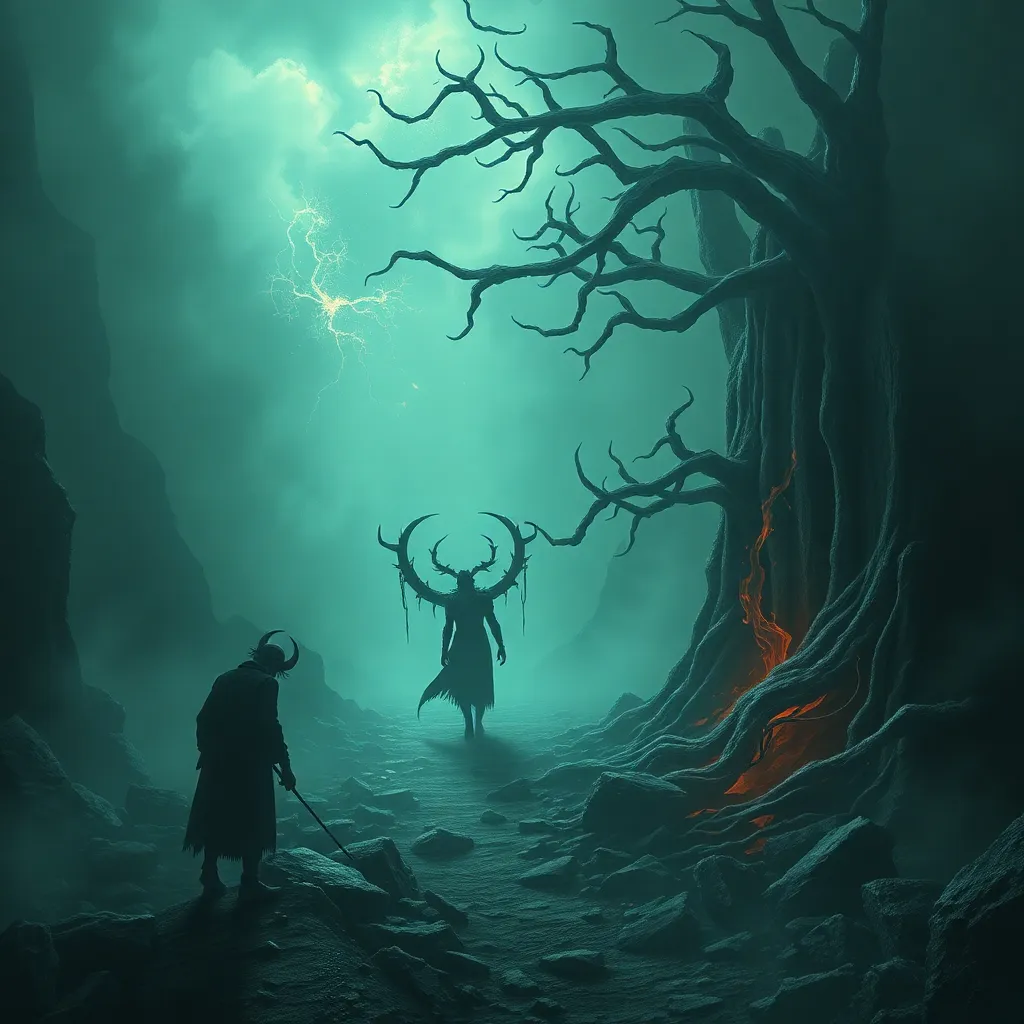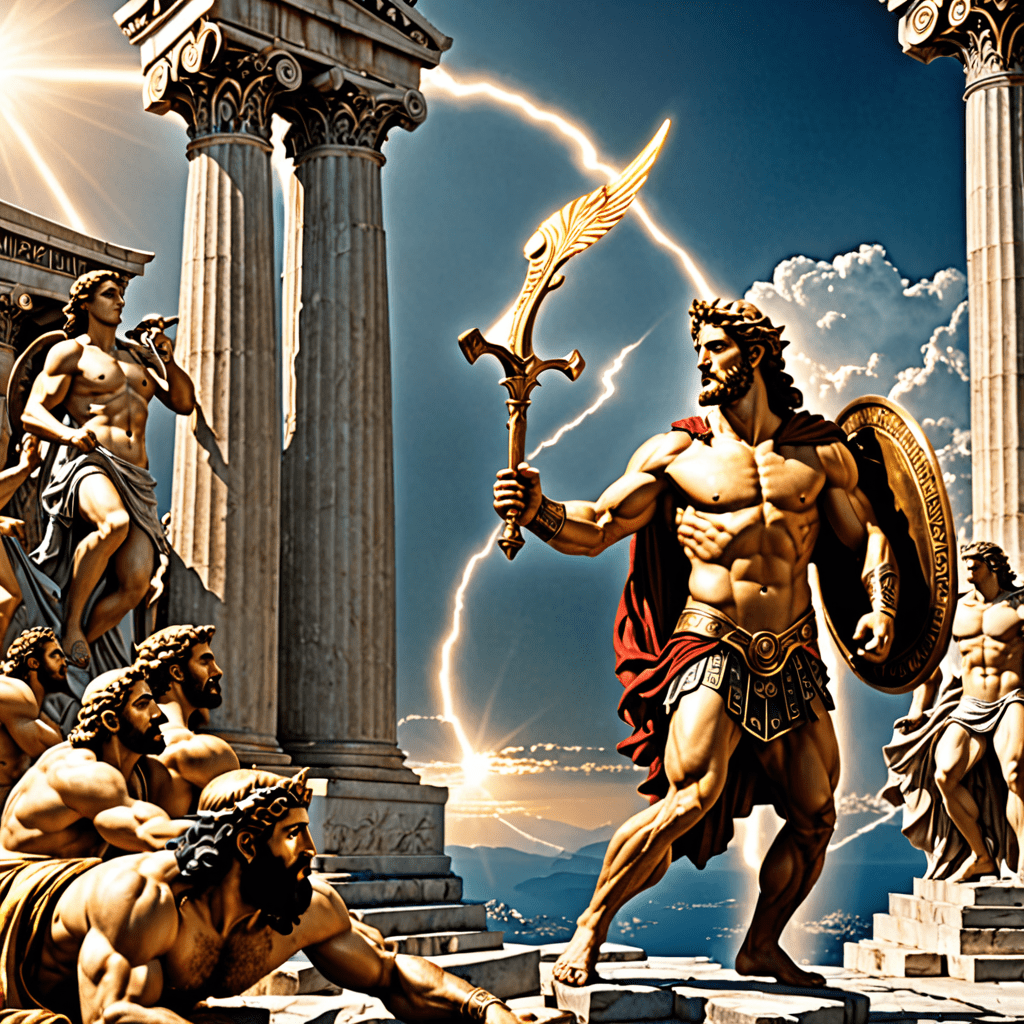The Enchanting Realm of Indonesian Mythical Birds
Indonesia, a nation of over 17,000 islands, is home to a rich tapestry of myths and legends. Among these captivating stories, mythical birds hold a special place, soaring through Indonesian folklore as symbols of power, wisdom, and spiritual guidance. These legendary creatures are not just figments of imagination, but deeply ingrained in the cultural identity of the archipelago. They adorn ancient temples, inspire artistic expressions, and play crucial roles in traditional ceremonies, reminding us of the enduring connection between humans and nature.
Guardians of the Skies: Birds as Symbols in Indonesian Culture
Birds have always captivated human imagination, and in Indonesia, their significance extends beyond mere observation. In traditional beliefs, birds are seen as intermediaries between the earthly realm and the divine. Their ability to fly freely across the skies makes them symbols of freedom, spiritual ascent, and connection to the supernatural. Moreover, specific species of birds often hold unique meanings, reflecting the diverse cultural landscape of Indonesia.
The mythical birds of Indonesia are not just messengers or symbols; they are often depicted as powerful beings, capable of influencing the lives of humans. These creatures embody the awe and reverence that people hold for the natural world. Understanding the myths surrounding these birds provides insights into the beliefs, values, and rituals that have shaped Indonesian culture for centuries.
Garuda: The Majestic King of Birds and Divine Mount
Towering above all other mythical birds in Indonesian folklore is Garuda, a majestic eagle-like creature that serves as the divine mount of Lord Vishnu in Hinduism. In Hindu mythology, Garuda is revered as the King of Birds, possessing immense strength, speed, and wisdom. He is often depicted with a golden body, sharp talons, and a fearsome beak.
The Garuda Myth: Origins, Symbolism, and Cultural Significance
Garuda's origins are deeply intertwined with the epic tale of the Mahabharata, a foundational text of Hindu culture. In this epic, Garuda is portrayed as the son of a sage and a celestial nymph. His story revolves around his quest to free his mother, who was imprisoned by the gods. To accomplish this, Garuda agrees to become the mount of Vishnu, and in return, Vishnu bestows upon him his divine powers.
Garuda's symbolism is multifaceted. He represents the sun, light, and victory over darkness. He is a symbol of strength, power, and divine protection. Garuda's majestic presence has made him a central figure in Hindu-Buddhist art and literature, adorning temples, sculptures, and manuscripts across Indonesia.
Borobudur’s Avian Guardians: The Mythical Birds of the Stupa
The magnificent Borobudur Temple in Java, a masterpiece of Buddhist architecture, offers a testament to the enduring presence of mythical birds in Indonesian culture. The temple's intricate carvings and reliefs feature numerous depictions of Garuda and other legendary avian creatures. These figures are not merely decorative elements; they serve as guardians of the sacred space, protecting the temple and its devotees from harm.
The mythical birds of Borobudur embody the principles of Buddhist teachings. They symbolize the journey towards enlightenment, reminding us of the importance of overcoming our earthly limitations and reaching for higher spiritual realms. Their presence on the temple's walls underscores the profound connection between religion and art in shaping the cultural identity of Indonesia.
The Garuda’s Role in Hindu-Buddhist Art and Literature
Garuda's influence extends far beyond the realm of mythology; he is deeply ingrained in Hindu-Buddhist art and literature throughout Indonesia. His majestic form adorns ancient temples, sculptures, and manuscripts. He is often depicted with outstretched wings, soaring through the skies or perched on a lotus flower, signifying spiritual elevation and liberation. Garuda's presence in art serves as a reminder of his divine power and protection.
Garuda is a prominent figure in the Ramayana, another epic Hindu text. In this story, Garuda plays a crucial role in helping Rama, the main hero, to rescue his wife Sita from the clutches of the demon king Ravana. Garuda's assistance embodies his unwavering loyalty to Vishnu and his commitment to upholding righteousness.
In traditional shadow puppet performances, known as "wayang kulit," Garuda is a central character. His appearance brings a sense of drama and spectacle to the performance. In dances and rituals, Garuda's movements inspire awe and reverence. His imagery transcends the boundaries of religious and cultural affiliations, making him a unifying symbol within Indonesian society.
Theories on the Origins of Garuda Mythology
The origins of Garuda mythology are shrouded in mystery, but scholars have proposed various theories to explain his presence in Indonesian folklore. One theory suggests that Garuda's origins lie in ancient Vedic beliefs, tracing back to pre-Hindu traditions in India. The worship of birds, particularly eagles, was common in ancient cultures, and these beliefs may have influenced the development of Garuda mythology.
Another theory suggests that Garuda was influenced by earlier Southeast Asian traditions, particularly the veneration of birds as powerful spiritual beings. In many cultures across Southeast Asia, birds are seen as messengers between humans and the spirit world. This belief may have contributed to the development of Garuda as a divine messenger and protector.
It is also possible that Garuda mythology evolved through a process of syncretism, where different beliefs and traditions blended together over time. The influence of Hinduism, Buddhism, and indigenous beliefs may have contributed to the complex and multifaceted nature of Garuda mythology.
The Birdman of Java: The Myth of Manuk Dadali
While Garuda is a prominent figure in Hindu-Buddhist mythology, Indonesian folklore also features unique and fascinating mythical birds. One such creature is Manuk Dadali, a mythical birdman from the island of Java. Manuk Dadali is a fascinating figure, blending human and bird characteristics. He is said to be a skilled warrior with the ability to fly through the air.
The myth of Manuk Dadali is often associated with the story of the creation of the island of Java. According to legend, Manuk Dadali was tasked with carrying a sacred stone from the heavens to earth. As he descended, the stone fell into the sea, creating the island of Java.
Manuk Dadali is a symbol of bravery, strength, and resilience. He is also seen as a protector of the land, watching over the island of Java and its people. The myth of Manuk Dadali reminds us of the enduring power of legends and their ability to shape cultural identity.
The Mystical Hornbill: A Symbol of Fertility and Wisdom
The hornbill, a bird with a distinctive large beak, holds a special place in Indonesian folklore. In many cultures across Indonesia, the hornbill is seen as a symbol of fertility, wisdom, and good fortune. The bird's unique appearance and its association with the forest make it a powerful symbol in traditional beliefs.
The hornbill's large beak is often seen as a representation of the male principle, while the bird's ability to fly freely through the skies symbolizes spiritual ascent. In some cultures, the hornbill is associated with the spirit of ancestors, and it is believed to be able to bridge the gap between the living and the dead.
The Hornbill in Indonesian Folklore and Rituals
The hornbill plays a prominent role in traditional rituals and ceremonies across Indonesia. In some regions, the hornbill is believed to bring good luck and prosperity. In other regions, its presence is associated with fertility rituals, and it is believed to have the power to ensure bountiful harvests.
The hornbill's feathers are often used in traditional headwear and ornaments, serving as a symbol of status and power. In some areas, the hornbill's beak is also used in traditional medicine, believed to have healing properties. The hornbill's deep connection to nature and its symbolic significance make it an essential part of Indonesian cultural heritage.
FAQ
Q: Are mythical birds real?
A: Mythical birds, like Garuda and Manuk Dadali, are creatures of folklore and legend. They are not real animals but represent symbolic figures in storytelling and cultural traditions.
Q: What is the significance of birds in Indonesian culture?
A: Birds hold a special place in Indonesian culture, often representing freedom, spiritual ascent, and connection to the supernatural. They are seen as intermediaries between the earthly realm and the divine.
Q: What is the role of Garuda in Hinduism?
A: In Hinduism, Garuda is the divine mount of Lord Vishnu, known for his immense strength, speed, and wisdom. He symbolizes the sun, light, and victory over darkness.
Q: What is the connection between Garuda and Borobudur Temple?
A: The Borobudur Temple features numerous depictions of Garuda and other mythical birds, serving as guardians of the sacred space and symbolizing the journey towards enlightenment.
Q: What is the importance of the hornbill in Indonesian folklore?
A: The hornbill is a symbol of fertility, wisdom, and good fortune in many Indonesian cultures. It is associated with traditional rituals and ceremonies, and its feathers are often used in traditional headwear and ornaments.




